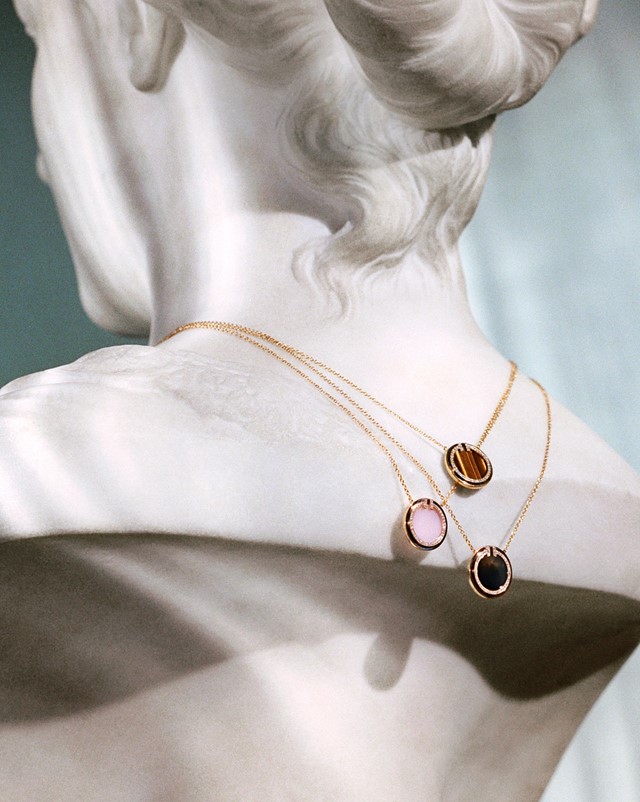In the third of a new series exploring the precious stones used in the latest Tiffany T designs, Ana Kinsella traces the history of onyx, from ancient Rome to Victorian England and beyond
Tiffany & CoAny fan of jewels and trinkets can only dream of taking a peek inside Elizabeth Taylor’s erstwhile trove. The Hollywood icon amassed one of the most expensive private collections of jewellery in the world during her lifetime, and after her death in 2011, much of it was auctioned off to raise money for the charitable foundation in her name. One notable piece in the collection was a yellow gold pendant necklace in coral, diamond and black onyx given to Taylor by two-time husband Richard Burton for her 40th birthday.
The necklace itself is phenomenal: a fat disc of gold is set with teardrops of poppy coral and dark onyx. But it’s the small yet distinctive onyx stones that really make the piece so unusual. Onyx, usually black, and made of the layered mineral chalcedony, has a rich history in jewellery, having been long favoured for cameos and carved pieces as far back as ancient Rome. And more recently it’s been used in interiors and homewares, too, for its opulence and the captivating way it reacts with light. In Mies Van Der Rohe’s esteemed Villa Tugendhat in the Czech Republic, layers of honey-coloured onyx from the Atlas Mountains in Morocco form a beguiling interior wall that shifts from translucent to opaque as the sun moves through the house, built in 1930.
Over the years, many have ascribed properties of healing to black onyx, as a crystal that can bring positive feelings and emotional balance to the person who wears it. As a material used in jewellery, it is heavy and feels cool when worn on the skin, and it has a highly polished finish that can catch the light. In Victorian England, jewellery made from black materials flourished with the rise of so-called mourning jewellery, and elegant onyx pieces found a home in many collections, alongside other black materials such as jet or bog oak.
Today, you’ll often find onyx in elegant Art Deco-style cocktail rings, its smooth and shining black surface an ideal counterpoint to the bright colours of jade or aventurine. There’s an eternal elegance to onyx, which might explain why it’s been so constantly in demand over the centuries, while its mysterious depths can soak up personal meaning and emotional value. For instance, when the time came to sell Taylor’s necklace, given to her by her beloved Burton, the estimate was set at $3,000 to $5,000. At the auction block in December 2011, it fetched $104,500.
Discover new onyx designs from the Tiffany T collection here.
